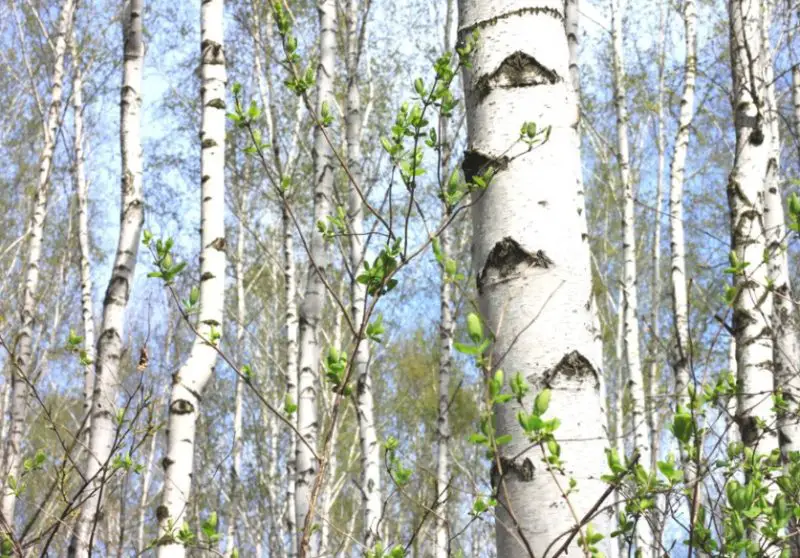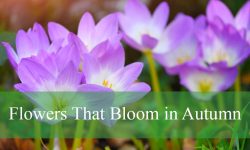Paper Birch (Betula papyrifera), also known as white birch or canoe birch, is a deciduous tree native to North America. Known for its striking white bark that peels in layers, this tree is a favorite in landscaping and natural forest settings. Its delicate foliage, rapid growth, and tolerance to cold make it a desirable addition to gardens and urban green spaces.
This guide will provide comprehensive information on how to successfully grow and care for Paper Birch, ensuring it remains healthy and vibrant for years to come.
Characteristics of Paper Birch

Appearance
Paper Birch (Betula papyrifera) is a striking deciduous tree known for its ornamental beauty and distinct features. It typically reaches a mature height of 50 to 70 feet with a moderate spread of about 35 feet, forming an upright, pyramidal to irregular crown.
One of its most defining characteristics is its smooth, white bark, which peels away in thin, papery layers—a feature that not only gives the tree its name but also makes it highly decorative in landscapes. As the tree ages, the bark may develop dark horizontal lenticels and slight fissures, adding texture and visual appeal.
The leaves of the Paper Birch are ovate with serrated edges, measuring around 2-4 inches long. In spring and summer, they present a lush green color, but in autumn, they transform into a brilliant golden-yellow, creating a stunning seasonal display. This vibrant fall foliage makes Paper Birch a favored choice in ornamental plantings and naturalized landscapes.
During the growing season, the tree produces slender, cylindrical catkins that function as flowers. These catkins later develop into small, winged seeds, which provide an important food source for various species of birds and small mammals, contributing to local ecosystems.
Growth Rate
Paper Birch is considered a fast-growing tree, typically adding 1.5 to 2 feet of height per year under ideal conditions. It thrives in cool climates, performing best in USDA Hardiness Zones 2-7.
For optimal growth, Paper Birch prefers moist, well-drained soils and benefits from full sun to partial shade. While it tolerates a range of soil types, it does best in slightly acidic, loamy soils and does not thrive in hot, dry conditions. The tree is commonly found in northern temperate regions, often growing along riverbanks, lakeshores, and mixed woodlands where moisture is abundant.
Lifespan
The lifespan of Paper Birch varies significantly based on its environment. In urban and landscaped areas, where stressors such as pollution, soil compaction, and limited moisture may be present, the tree typically lives for 30 to 50 years. However, in natural forest settings—where conditions are more favorable—it can survive for well over 100 years.
The tree’s longevity is often influenced by factors such as climate, soil health, and susceptibility to pests and diseases. Paper Birch is particularly vulnerable to birch borers and fungal infections, which can shorten its lifespan if left untreated. Despite these challenges, it remains a popular tree for its beauty, rapid growth, and ecological benefits.
How to Grow Paper Birch
Choosing the Right Location
Selecting an appropriate planting site is crucial for the long-term health and vigor of Paper Birch (Betula papyrifera). This tree thrives in cool climates and performs best in areas with abundant sunlight and consistent soil moisture. Naturally found along riverbanks, lakeshores, and forest edges, Paper Birch prefers locations that mimic these conditions.
Because it is sensitive to heat and drought, it should be planted in areas where summer temperatures are moderate and moisture is readily available. Placing it near water sources such as streams, ponds, or rivers can significantly improve its resilience and longevity. However, it is essential to ensure proper soil drainage to prevent waterlogging, which can lead to root rot and other health issues.
Soil Requirements
For optimal growth, Paper Birch requires nutrient-rich, well-draining soil with good moisture retention. The following factors are important when considering soil conditions:
- pH Preference: The ideal soil pH range is slightly acidic to neutral (5.0 – 7.0). Strongly alkaline soils may hinder nutrient absorption and affect growth.
- Organic Matter: Amending the soil with compost or organic mulch can improve fertility and moisture retention, supporting the tree’s rapid growth.
- Drainage Needs: While Paper Birch requires consistent moisture, it does not tolerate waterlogged or compacted soils. Poor drainage can lead to root suffocation and increase susceptibility to diseases like root rot.
- Drought Sensitivity: This species struggles in dry, compacted soils, so regular watering and proper soil aeration are essential, especially during hot, dry spells.
To improve soil quality, consider incorporating materials like peat moss, shredded bark, or leaf mold, which help retain moisture while ensuring good aeration.
Sunlight Requirements
Sunlight exposure plays a vital role in the growth and health of Paper Birch. It requires:
- Full sun to partial shade for best results.
- A minimum of six hours of direct sunlight daily to support strong trunk and foliage development.
While Paper Birch can tolerate some shade, too much can lead to weaker growth, thinner bark, and reduced fall color intensity. If planted in a partially shaded area, ensure it still receives enough light, particularly in the morning and early afternoon.
For the best results, plant Paper Birch in an open area with ample sunlight, while providing some afternoon shade in warmer climates to reduce stress during hot summer months. Proper site selection will help maximize its ornamental value and longevity.
Planting Paper Birch
Proper planting techniques are essential to ensure the successful establishment and long-term health of a Paper Birch tree (Betula papyrifera). Following these steps will provide the best conditions for growth and resilience.
Step 1: Select the Right Spot
Choosing the appropriate location is crucial for the tree’s health and longevity. Consider the following factors when selecting a planting site:
- Cool, well-ventilated areas: Paper Birch thrives in cool climates with good air circulation. Avoid sites that trap heat, such as areas near pavement, buildings, or south-facing slopes in hot regions.
- Moisture availability: The tree prefers moist, well-draining soils, making locations near streams, ponds, or natural water sources ideal.
- Protection from extreme heat: While Paper Birch requires ample sunlight, providing some afternoon shade in warmer climates can help prevent heat stress and premature decline.
Step 2: Dig the Hole
Proper hole preparation is essential for healthy root development.
- Dig a hole twice as wide as the tree’s root ball but no deeper than its height. This allows for adequate root expansion without sinking the tree too low into the soil.
- Loosen the soil at the bottom and sides of the hole to improve drainage and make it easier for roots to spread.
- If the soil is heavy clay or compacted, consider mixing in organic matter like compost to improve aeration and drainage.
Step 3: Plant the Tree
- Carefully remove the Paper Birch from its container or burlap wrapping, being gentle with the roots to avoid unnecessary damage.
- If the roots are circling the root ball (root-bound), gently tease them apart to encourage outward growth.
- Place the tree in the hole so that the top of the root ball is level with the surrounding ground. Planting too deep can suffocate roots, while planting too shallow can expose them to drying out.
- Backfill the hole with the original soil, gently firming it down as you go to eliminate air pockets. Avoid overpacking, as roots need space to breathe.
Step 4: Water and Mulch
- Immediately after planting, water thoroughly to help settle the soil and encourage root establishment. The soil should be moist but not waterlogged.
- Apply a 2-3 inch layer of mulch around the base of the tree to:
- Retain soil moisture.
- Regulate soil temperature.
- Reduce competition from weeds.
- Keep mulch a few inches away from the trunk to prevent excess moisture buildup, which can lead to rot and pest issues.
Caring for Paper Birch
Proper care is essential to maintaining the health and beauty of Paper Birch (Betula papyrifera). This tree thrives with consistent moisture, balanced nutrition, and regular maintenance. By following these care guidelines, you can help ensure its longevity and resilience against environmental stressors.
Watering
Paper Birch has moderate to high water needs, especially during its early years and in dry conditions. Maintaining consistent soil moisture is key to preventing stress and decline.
Young trees require regular watering, particularly during the first two to three years while the root system is still developing. Keep the soil evenly moist but not waterlogged. Established trees still need adequate moisture, particularly during hot summers or droughts.
Deep watering once a week during dry spells ensures that moisture reaches at least 12 inches into the soil. A slow, deep soak is preferable over frequent shallow watering. While moisture is important, excessive watering can lead to root rot, so ensure the soil drains well to prevent standing water around the roots.
Fertilizing
A balanced fertilization schedule promotes healthy foliage, strong roots, and overall vigor. However, over-fertilization, particularly with nitrogen-heavy products, can make the tree more susceptible to pests like the bronze birch borer.
Use a balanced, slow-release fertilizer with a ratio of 10-10-10 (Nitrogen-Phosphorus-Potassium) in early spring before new growth emerges. Apply fertilizer evenly around the drip line (the area beneath the outer edge of the branches) and water thoroughly after application to help nutrients reach the roots. Avoid excessive nitrogen, as it can weaken the tree’s natural defenses against pests and diseases.
If the tree shows signs of nutrient deficiency, such as yellowing leaves or stunted growth, consider applying a micronutrient-rich fertilizer or organic compost to improve soil health.
Pruning
Pruning is important for maintaining tree structure, improving airflow, and removing unhealthy growth. However, timing is crucial for Paper Birch, as it is prone to excessive sap loss when pruned at the wrong time.
Late summer to early fall is the ideal time to prune, as the sap flow is lower, reducing stress on the tree. Avoid pruning in late winter or early spring, when the sap is actively rising—cutting during this time can cause excessive bleeding.
Remove dead, diseased, or damaged branches to prevent the spread of disease and pests. Eliminate crossing or weak branches to promote a strong structure and improve air circulation. Avoid heavy pruning, as excessive removal of branches can stress the tree and make it more vulnerable to infestations.
Regularly inspecting and pruning your Paper Birch will help keep it healthy, visually appealing, and resilient against environmental threats.
Common Pests and Diseases
Paper Birch (Betula papyrifera) is a resilient tree, but it is vulnerable to several pests and diseases that can significantly impact its health. Understanding these threats and taking preventative measures can help ensure the tree’s longevity and vigor.
Bronze Birch Borer (Agrilus anxius)
The bronze birch borer is one of the most serious threats to Paper Birch, often leading to severe decline or even tree death if left untreated. This insect targets weakened or stressed trees, making proper care essential for prevention.
Infestations begin when adult borers lay eggs on the tree’s bark. Once hatched, the larvae tunnel into the cambium layer, disrupting nutrient and water flow. Symptoms include yellowing or sparse foliage, dying branches, and small D-shaped exit holes in the trunk where adult borers emerge. In advanced cases, bark may become loose and peel away, revealing winding galleries underneath.
Prevention is key, as heavily infested trees are difficult to save. Maintaining tree health through regular watering, proper fertilization, and reducing environmental stress can help prevent infestations. Avoid planting Paper Birch in hot, dry areas, as heat stress makes it more susceptible. Insecticidal treatments may be necessary if borers are detected early.
Birch Leaf Miner (Fenusa pusilla)
The birch leaf miner is a small insect whose larvae feed inside birch leaves, causing them to turn brown and curl. While not as deadly as the bronze birch borer, severe infestations can weaken the tree over time, making it more vulnerable to other stressors.
Damage appears as irregular brown patches between leaf veins, which may spread if multiple larvae are present. Heavy infestations can lead to premature leaf drop, reducing the tree’s ability to photosynthesize effectively.
Control methods include applying insecticidal soap to target larvae or introducing natural predators like parasitic wasps, which help regulate the population. Ensuring the tree receives adequate nutrients and water can also reduce susceptibility to infestation.
Fungal Diseases
Paper Birch is susceptible to several fungal diseases, particularly in humid or wet conditions. Two common issues include leaf spot and cankers.
Leaf spot, caused by fungal pathogens, appears as dark, irregular spots on leaves, often leading to premature defoliation in severe cases. It thrives in moist, humid environments, especially when air circulation is poor. To prevent spread, remove and dispose of infected leaves, and apply fungicidal treatments if necessary.
Cankers are areas of dead, sunken bark that develop due to fungal infections, often entering through wounds or weak points in the tree. These can disrupt the tree’s vascular system, leading to branch dieback. Pruning infected branches and improving overall tree health can help minimize the risk of canker formation.
Ensuring good airflow, avoiding overhead watering, and promptly removing infected plant material are effective strategies for managing fungal diseases. In severe cases, fungicides may be necessary to control further spread.
Conclusion
Paper Birch is a stunning tree that enhances any landscape with its distinctive white bark, fast growth, and vibrant fall color. With proper care, including adequate watering, correct soil conditions, and pest management, it can thrive for decades. Whether planted for its beauty, wildlife attraction, or environmental benefits, Paper Birch is an excellent choice for any garden or natural area. By following this guide, you can ensure the health and longevity of your Paper Birch tree, enjoying its beauty and ecological benefits for years to come.






